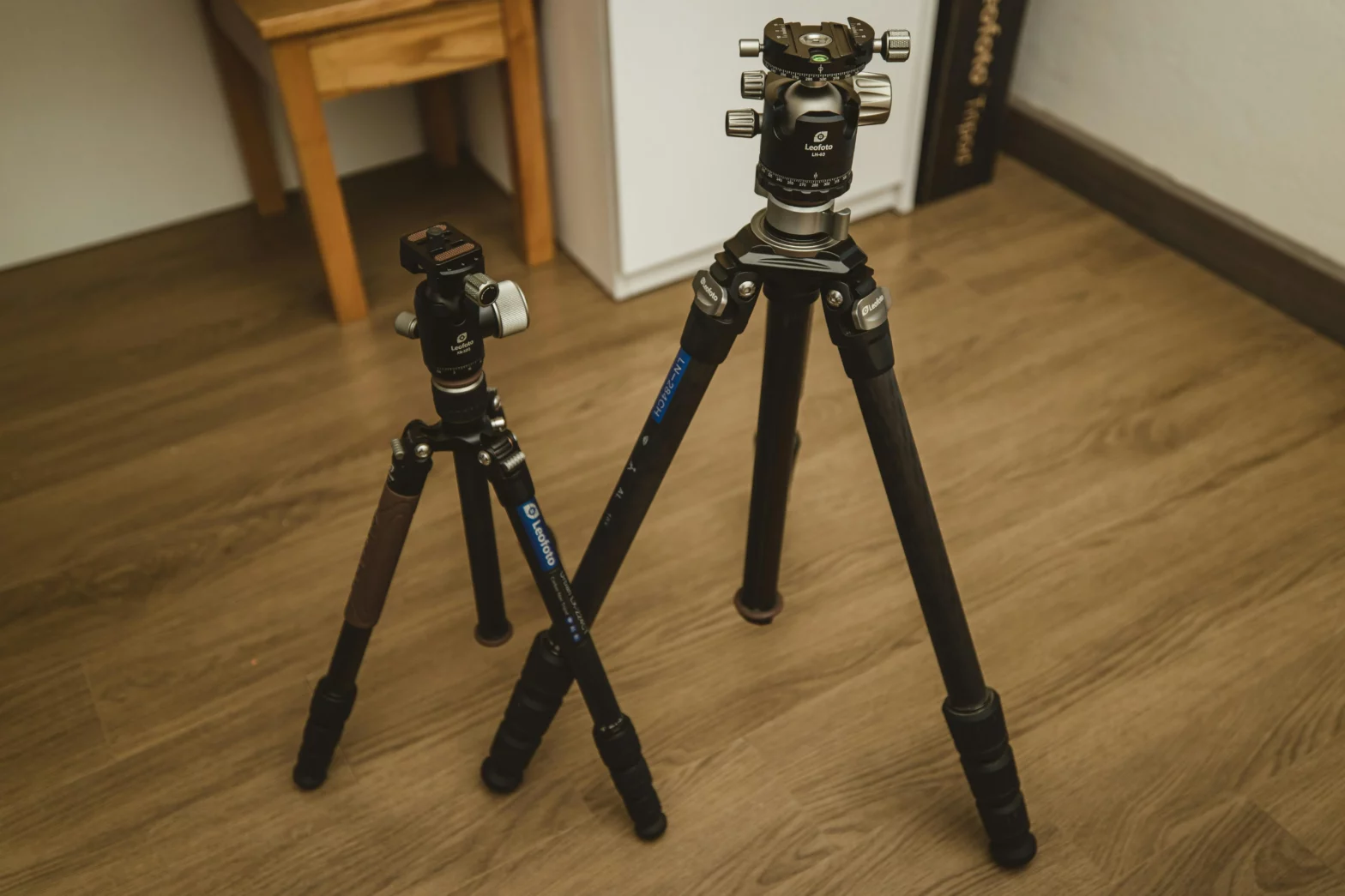Table of Contents
Whether you’re an industry expert or a beginner trying to gain your footing as a videographer, having a tripod you can rely on is essential. Videography has evolved significantly over the years, and with it, the tools and equipment that professionals and enthusiasts use. Among these essential tools is the tripod. Understanding the various types of tripods and their uses can greatly enhance the quality of your videos. This article delves into the different types of tripods available for videographers, what to consider when buying one, and why a tripod is indispensable for your videography needs.
What’s a Tripod?
A tripod is a three-legged stand used to stabilise and support cameras and other imaging devices. It provides a stable platform that minimises camera shake and allows for precise framing and long exposure shots. Tripods come in various sizes and configurations, each designed to cater to different types of shooting scenarios. They are a fundamental piece of equipment for videographers who need steady and smooth shots.
Types of Tripods
1. Standard Tripods
Standard tripods are the most common type used by videographers. They typically feature adjustable legs and a centre column that allows the camera to be positioned at different heights. These tripods are versatile and suitable for a wide range of shooting situations, from studio setups to on-location shoots. They often come with a fluid head, providing smooth pan and tilt movements ideal for video recording.
2. Travel Tripods
Travel tripods are designed for portability and convenience. They are lightweight and compact, making them easy to carry around during travel. Despite their smaller size, travel tripods can be very sturdy and reliable. They usually have features like a reversible centre column and folding legs, which help reduce their size without compromising stability.
In addition to a good tripod, check out our list of ‘Essential Travel Vlog Equipment‘ to make sure you have all you need to create beautiful content!
3. Tabletop Tripods
Tabletop tripods are small and designed to be placed on flat surfaces like tables or desks. They are perfect for vloggers or videographers who shoot product reviews, tutorials, or any content that requires a stable shot from a low angle. These tripods are highly portable and can easily fit into a bag or pocket.
4. Monopods
While not technically tripods, monopods are worth mentioning due to their utility in videography. A monopod has a single leg and provides a balance between stability and mobility. It is ideal for situations where quick movements are necessary, such as sports or wildlife videography. Monopods are lighter and easier to manoeuvre compared to tripods, but they do not offer the same level of stability.
5. GorillaPods
GorillaPods are flexible tripods with bendable legs that can wrap around objects like tree branches, poles, or fences. This flexibility makes them extremely versatile for capturing unique angles and shots in challenging environments. They are popular among adventure videographers and vloggers who often shoot in unconventional locations.
6. Studio Tripods
Studio tripods are heavy-duty tripods designed for use in controlled environments like studios. They are typically larger and more robust, capable of supporting heavy camera rigs and accessories. These tripods offer maximum stability and often come with advanced features like geared centre columns and professional fluid heads for precise camera movements.
What to Keep in Mind While Buying a Tripod
1. Load Capacity
One of the most important factors to consider when buying a tripod is its load capacity. Ensure that the tripod you choose can support the weight of your camera and any additional equipment like microphones, lights, or telephoto lenses. Overloading a tripod can lead to instability and potential damage to your equipment.
2. Height
Consider the maximum and minimum height of the tripod. A tripod that can extend to eye level or higher is often desirable for comfortable shooting. Also, check how low it can go, as this is useful for low-angle shots. Adjustable legs and centre columns are beneficial for achieving the desired height.
3. Weight and Portability
If you plan to travel frequently with your tripod, its weight and portability are crucial factors. Lightweight materials like carbon fibre are ideal for travel tripods, offering strength without the bulk. However, they can be more expensive than aluminium tripods, which are heavier but more affordable.
4. Stability
Stability is a key characteristic of a good tripod. Look for features like sturdy leg locks, non-slip feet, and a stable centre column. Some tripods come with a hook on the centre column to hang a weight for added stability in windy conditions.
5. Head Type
The tripod head is another critical component. Fluid heads are excellent for videography, providing smooth pans and tilts. Ball heads are more common in photography but can also be used for video. Ensure that the head can support your camera and allows for easy adjustments.
Why You Need a Tripod
1. Stability
A tripod provides the stability needed to capture sharp, clear videos. This is especially important in low-light conditions where slower shutter speeds are necessary. Even slight movements can result in blurry footage, making a tripod essential for maintaining quality.
2. Versatility
Tripods offer versatility in framing and composition. They allow for precise control over the camera’s position and angle, enabling creative shots that would be difficult to achieve handheld. From time-lapse videos to long-exposure shots, a tripod expands your creative possibilities.
3. Professionalism
Using a tripod can significantly enhance the professionalism of your work. Stable, smooth footage is a hallmark of high-quality videography. A tripod also frees your hands, allowing you to focus on other aspects of the shoot, such as directing, adjusting lighting, or monitoring audio.
4. Fatigue Reduction
Holding a camera for extended periods can be tiring and lead to shaky footage. A tripod takes the weight off your hands and shoulders, reducing fatigue and allowing you to concentrate on capturing the best shots.
5. Consistency
For projects that require consistent framing, such as interviews or multi-camera setups, a tripod ensures that your shots remain steady and uniform. This consistency is crucial for maintaining a professional look throughout your video.
In conclusion, a tripod is an invaluable tool for videographers, offering stability, versatility, and professional quality to your video projects. By understanding the different types of tripods and considering key factors when purchasing one, you can choose the best tripod to meet your specific needs and elevate your videography to the next level.
Frequently Asked Questions About Types of Tripods
Are all camera tripods the same?
No, all camera tripods are not the same. They vary in size, weight, material, load capacity, and features to suit different types of cameras and shooting scenarios. Some are designed for portability, while others offer maximum stability or flexibility.
Can any camera use any tripod?
Not all cameras can use any tripod. Compatibility depends on factors like the tripod’s load capacity, the type of tripod head, and the camera’s mounting system. Most tripods use a standard screw mount, but it’s important to ensure the tripod can support the weight and balance of your specific camera.
What’s the difference between a video tripod and a camera tripod?
A video tripod typically has a fluid head for smooth pan and tilt movements, which is essential for video recording. In contrast, a camera tripod often has a ball head for quick adjustments and stability, primarily designed for still photography.
Can a camera tripod hold a phone?
Yes, a camera tripod can hold a phone if you use a phone mount adapter that attaches to the tripod’s standard screw mount.

